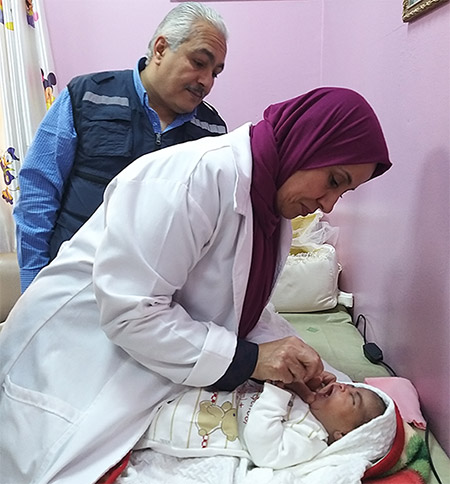 Libya’s last case of wild poliovirus was in 1991. The country occasionally conducts supplementary immunization activities (SIAs) and routine immunization has enabled the country to remain polio-free. However, ongoing large-scale internal and international population movement and a relatively recent history of conflict and instability combined with occasionally reported routine vaccine stock-outs puts Libya at high risk for poliovirus importation.
Libya’s last case of wild poliovirus was in 1991. The country occasionally conducts supplementary immunization activities (SIAs) and routine immunization has enabled the country to remain polio-free. However, ongoing large-scale internal and international population movement and a relatively recent history of conflict and instability combined with occasionally reported routine vaccine stock-outs puts Libya at high risk for poliovirus importation.
The last national immunization days (NIDs) in Libya were a multi-antigen campaign held over 8-15 December 2018, offering bivalent oral polio vaccine (bOPV) and measles vaccine. The coverage rate was 97.7% and the post-campaign monitoring results were 93.2%, making it a very successful campaign.
Polio surveillance in Libya
Surveillance is led by the Ministry of Health through its National Center for Disease Control (NCDC) in Tripoli. Extends across the country through health infrastructure. The country has 68 reporting sites and 54 active surveillance sites, and is additionally supported through government disease surveillance staff working at these sites and in other places.
Professional medical bodies such as associations of pediatricians have historically contributed to polio surveillance and vaccination campaigns in Libya. The AFP surveillance system faces immense challenges due to increasingly fragile health infrastructure.
Libya’s polio programme benefits from support from WHO and UNICEF. The NCDC is very active in ensuring samples from AFP cases are adequately stored and shipped to the Laboratory of Clinical Virology at the Pasteur Institute in Tunis with the reverse cold chain properly maintained. And with support from WHO, the NCDC coordinates regular training and refresher workshops on AFP surveillance.
As of early 2022, environmental surveillance is not carried out in Libya.




